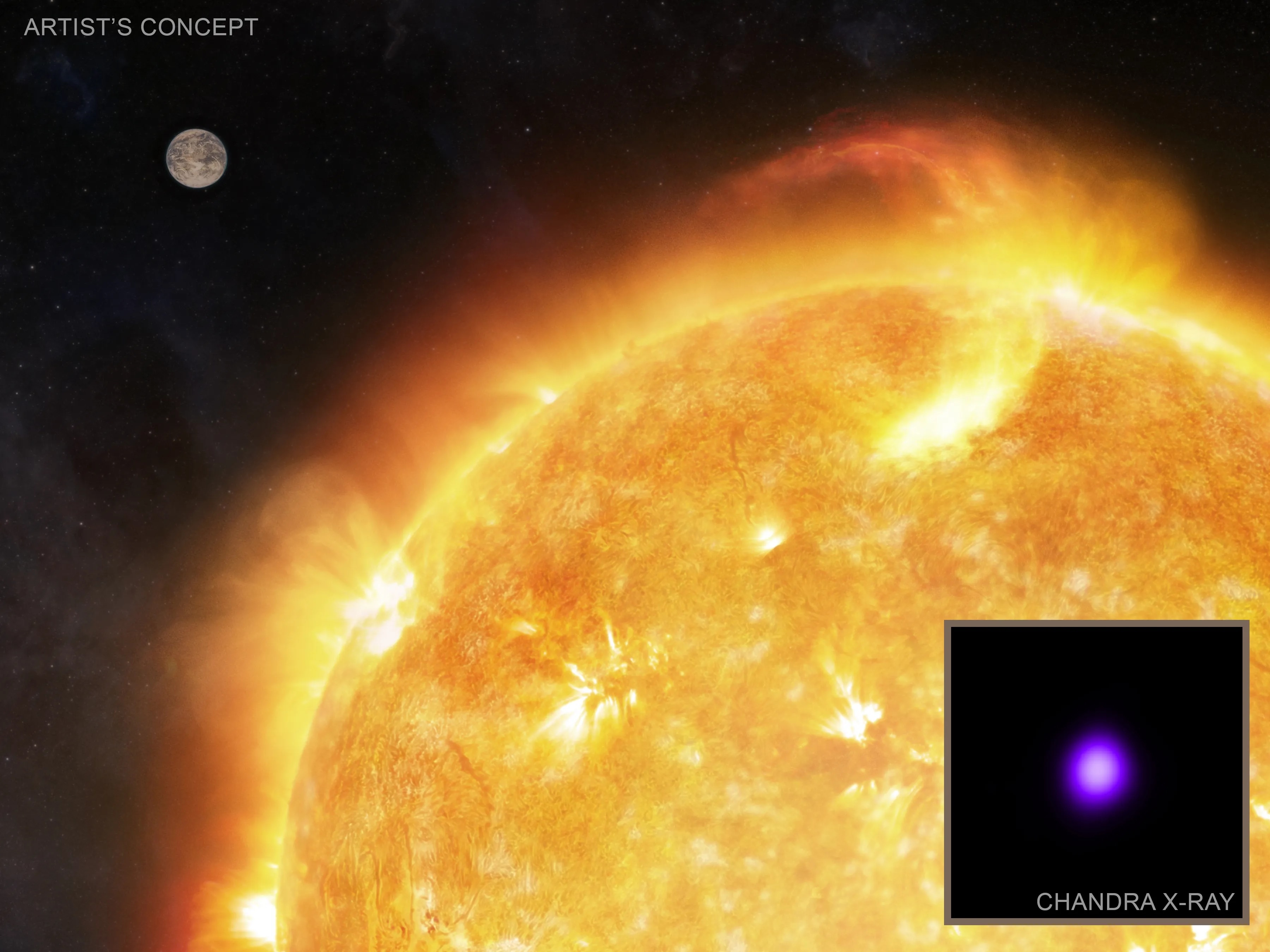18.01.2025

Planets around other stars need to be prepared for extreme weather conditions, according to a new study from NASA’s Chandra X-ray Observatory and ESA’s (European Space Agency’s) XMM-Newton that examined the effects of X-rays on potential planets around the most common type of stars.
Astronomers found that only a planet with greenhouse gases in its atmosphere like Earth and at a relatively large distance away from the star they studied would have a chance to support life as we know it around a nearby star.
Wolf 359 is a red dwarf with a mass about a tenth that of the Sun. Red dwarf stars are the most common stars in the universe and live for billions of years, providing ample time for life to develop. At a distance of only 7.8 light-years away, Wolf 359 is also one of the closest stars to the solar system.
“Wolf 359 can help us unlock the secrets around stars and habitability,” said Scott Wolk of the Center for Astrophysics | Harvard & Smithsonian (CfA), who led the study. “It’s so close and it belongs to such an important class of stars – it’s a great combination.”
Because red dwarfs are the most prevalent types of stars, astronomers have looked hard to find exoplanets around them. Astronomers have found some evidence for two planets in orbit around Wolf 359 using optical telescopes, but those conclusions have been challenged by other scientists.
“While we don’t have proof of planets around Wolf 359 yet, it seems very possible that it hosts multiple planets,” Wolk added. “This makes it an excellent test bed to look at what planets would experience around this kind of star.”
Wolk and his colleagues used Chandra and XMM to study the amounts of steady X-rays and extreme ultraviolet (UV) radiation – the most energetic type of UV radiation – that Wolf 359 would unleash on the possible planets around it.
They found that Wolf 359 is producing enough damaging radiation that only a planet with greenhouse gases like carbon dioxide in its atmosphere – and located at a relatively large distance from the star – would likely be able to sustain life.
“Just being far enough away from the star’s harmful radiation wouldn’t be enough to make it habitable,” said co-author Vinay Kashyap, also of CfA. “A planet around Wolf 359 would also need to be blanketed in greenhouse gases like Earth is.”
To study the effects of energetic radiation on the habitability of the planet candidates, the team considered the star’s habitable zone – the region around a star where liquid water could exist on a planet’s surface.
The outer limit of the habitable zone for Wolf 359 is about 15% of the distance between Earth and the Sun, because the red dwarf is much less bright than the Sun. Neither of the planet candidates for this system is located in Wolf 359’s habitable zone, with one too close to the star and the other too far out.
“If the inner planet is there, the X-ray and extreme UV radiation it is subjected to would destroy the atmosphere of this planet in only about a million years,” said co-author Ignazio Pillitteri of CfA and the National Institute for Astrophysics in Palermo, Italy.
The team also considered the effects of radiation on as-yet undetected planets within the habitable zone. They concluded that a planet like the Earth in the middle of the habitable zone should be able to sustain an atmosphere for almost two billion years, while one near the outer edge could last indefinitely, helped by the warming effects of greenhouse gases.
Another big danger for planets orbiting stars like Wolf 359 is from X-ray flares, or occasional bright bursts of X-rays, on top of the steady, everyday output from the star. Combining observations made with Chandra and XMM-Newton resulted in the discovery of 18 X-ray flares from Wolf 359 over 3.5 days.
Extrapolating from these observed flares, the team expects that much more powerful and damaging flares would occur over longer periods of time. The combined effects of the steady X-ray and UV radiation and the flares mean that any planet located in the habitable zone is unlikely to have a significant atmosphere long enough for multicellular life, as we know it on Earth, to form and survive. The exception is the habitable zone’s outer edge if the planet has a significant greenhouse effect.
These results were presented at the 245th meeting of the American Astronomical Society in National Harbor, Maryland, and are being prepared for publication in a journal. NASA’s Marshall Space Flight Center in Huntsville, Alabama, manages the Chandra program. The Smithsonian Astrophysical Observatory’s Chandra X-ray Center controls science operations from Cambridge, Massachusetts, and flight operations from Burlington, Massachusetts.
Quelle: NASA
